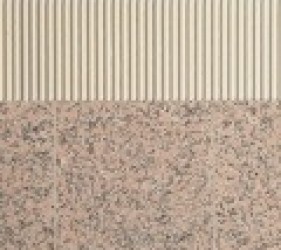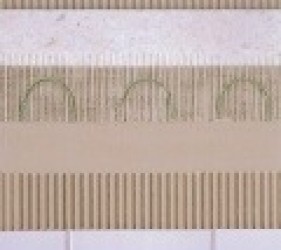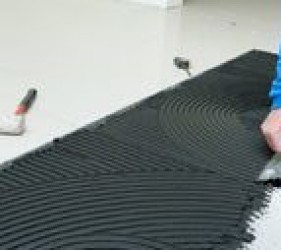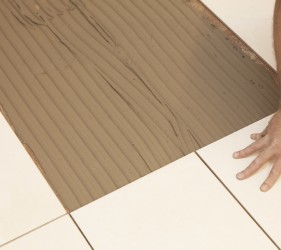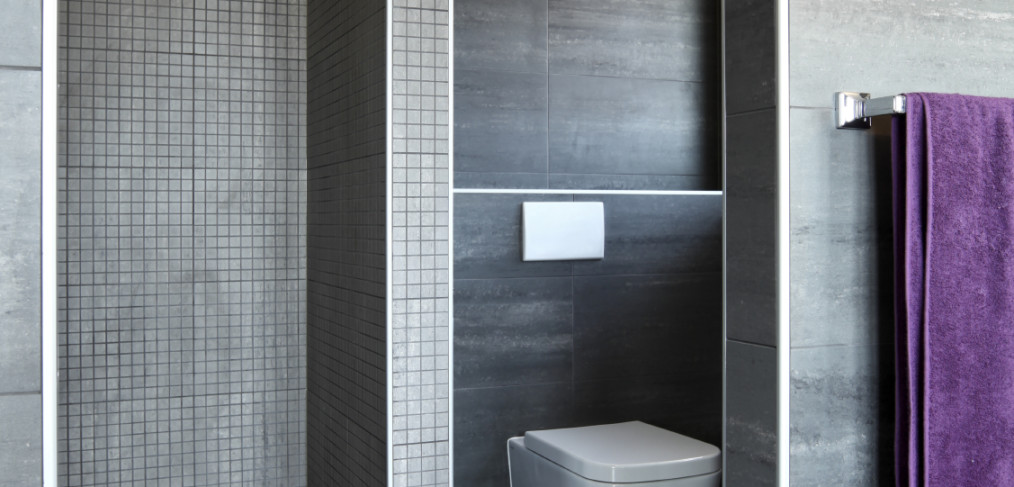
SMET features Professional Tiling Systems in Northern Builder Spring 2015
In this month’s Northern Builder Magazine, Smet Building Products promote their Professional range of Tiling System with manufacturing partner, Sopro Bauchemie GmbH.
SMET’S GUIDE TO THE MOST COMMON PROBLEMS WHEN DEALING WITH LARGE-FORMAT COVERING MATERIALS AND HOW TO FIND THE RIGHT SOLUTIONS…
An immense selection of large-format covering materials are now available on the market, with tremendous variations in size and, particularly, thickness. The largest units are now available up to a mind-boggling 4.3m2 (3600x1200mm), while the thinnest are a mere 3.5mm. The associated installation issues extend far beyond, where such tiles can be installed – on walls or floors – to problems of on-site handling.
These problems have been hotly debated among the experts, and some of the issues are addressed by the ZDB (Federation of the German Construction Industry) technical guidance paper, “Reliable laying of large – format coverings”. Failures are also known to have occurred due to voids/hollows below the covering, or fractures etc.
Smet Building Products Ltd, with the company’s manufacturing partner, Sopro Bauchemie GmbH, have responded to the latest trends by offering a comprehensive range of specialist tile-laying products and systems. What are the implications of large-format coverings for clients, designers and applicators? Are they merely an additional source of risk, or do they offer a real opportunity for successful specialists?
Joris Smet, Director, Smet Building Products Ltd, explained “Given due attention to a number of important points and the right choice of product, we believe the latter to be true! “Yet the entire project team must be open to new ideas. A re-think is needed in terms of design, pricing and site operations. This is crucial to the success of all contracts involving the installation of large-format coverings.”
To avoid problems in laying large-format tiles, the specific procedure for the works should be as follows – once the covering material is selected, this should first be checked for squareness, dimensional stability and possible deformation. Any warp in the units will make them unsuitable for installation in a half or third-bond arrangement.
The client should be given clear advice with regard to the feasibility of a particular layout pattern. To gain a clearer picture, it’s useful to lay out the tiles in the desired arrangement and assess their visual impact when exposed to grazing light. It is also important to obtain information from the ceramics manufacturer on whether the specified material is approved for the projected location (possible foot traffic/ loads, etc). Indeed, it’s important to note, that the very thin units and very large formats are subject to various constraints in this regard.
HANDLING
In terms of handling, a number of factors warrant consideration. For instance, to prevent the breakage of large-format covering materials during installation, the applicator should handle all materials with extreme care.
It is of paramount importance to ensure suitable equipment is available on site. The following should always be provided – large table for cutting and measuring, glass cutter, core bits for penetrations, a line or wire to cut through the adhesive bed of a ready laid tile (in case this needs to be removed) and suction cups.
When pricing to install large-format coverings, applicators should bear in mind that the existing substrate is likely to require an additional levelling coat. This means that, even where the foregoing works comply with the enhanced requirements to BS 8204 regarding permissible tolerances on level and surface regularity, the constructed substrate may still not allow immediate installation of a large-format covering – so you need to think about residual moisture content and type of substrate.
The use of suitable EN12004 S2, low stress, rapid-set, self-levelling compounds, available from SMET, offers the ideal solution to create plane, gradient-free floor surfaces. SMET also supplies suitable levelling mortars with trass and lightweight levelling mortars, which are recommended for levelling out wall surfaces or substrates laid to falls.
When installing floor coverings, it is possible that tile layers may encounter various types of screed. It is essential to check the floor screed or substrate for its residual moisture before the installation of tiles. This involves the use of a CM tester. The permissible residual moisture for cement-based screed is 2%, and for calcium sulphate screeds (anhydrite or alpha hemihydrate) 0.5% – 1.0% (unheated) or 0.3% – 0.5% (heated), depending on which adhesives and primers are selected.
SUITABILITY
Other factors that require measurement and analysis in determining the suitability of a substrate for large-format tile finishes include surface strength, bay size and movement joint design. Tiles smaller than 0.5m² can be laid on calcium sulphate screeds using SMET’s appropriate tiling system. Particular caution is required where large-format units >0.5m² are laid on calcium sulphate screeds. CA screeds may lose strength when exposed to moisture migration from normal-setting mortars.
Any thermal movement may then bring about void formation. Large-format units, normally of fully vitrified stoneware, are usually laid with very narrow joints, and the relatively small joint area slows down the escape from the building fabric of the surplus water in the bedding adhesive. This results in the problems described above.
A new technical and budgetary approach is therefore needed for coverings with units larger than 0.5m². This is because calcium sulphate screeds that are to receive such finishes require pre-treatment with a water-free, reaction resin-based primer or adhesive with high crystalline water binding capacity.
All other absorbent substrates should be pre-treated with a primer and all non-absorbent substrates with a special bonding primer. Provided the surfaces have been properly levelled and primed as described above, there should be nothing to prevent the successful installation of large-format coverings.
SMET SOLUTIONS
To eradicate the many issues highlighted in this article, a comprehensive range of products is available in the SMET Professional Tiling range.
As a general rule, a butter coat should be applied to the rear face of large-format units using the bedding adhesive. The coarser the texture of the tile‘s rear face, the more important this step is! Neglecting to perform this operation encourages air entrapment and void formation, with damage and failures as a later consequence.
It should also be noted that the latest generation of large-format ceramic units cannot be laid using the thick-bed method. A clear-cut specification of the substrate (screed), including compressive and tensile strengths, is therefore a prerequisite for the successful installation of these units with the thin-bed method. On surfaces subject to wide temperature fluctuations, the bay sizes for screeds and rigid coverings should be smaller than normal. To accommodate the tolerances of large format coverings, and thereby ensure a neat and satisfying appearance, a minimum joint width of 3mm should be adopted. Joints should be finished using high quality grouts, also available from SMET’s Professional range.
For further information on your specific tiling project, contact SMET. Additional technical details and the system brochure can be downloaded from the SMET website. The range of SMET Professional Tiling products is backed up with the expertise of technical advisors. SMET is site focused – providing you with industry specialists who will be with you on site to carry out moisture tests, provide training and support as well as demonstrate the Professional Tiling Systems.

